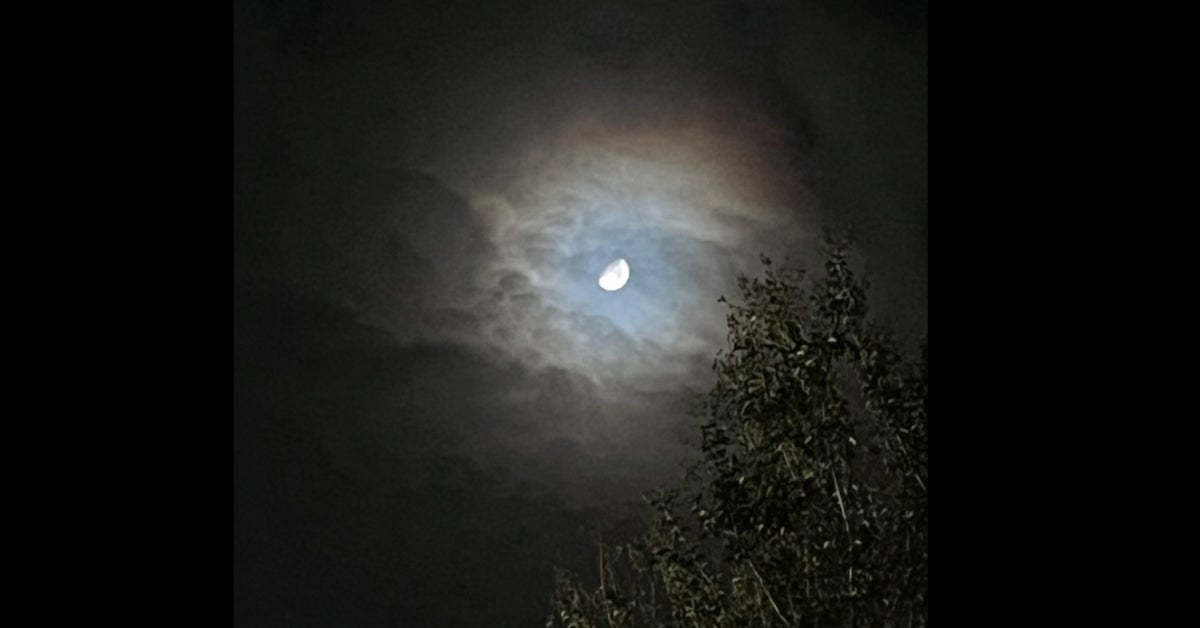PREWITT: Don’t know much about Halloween? Here are the facts, Jack
Published 8:00 am Friday, October 27, 2023

- Spooky Moon (Photo by Tracye Prewitt/ Vicksburg Post)
Have you ever wondered where the idea for Halloween came from?
I have heard people grumble that Halloween was a commercially made-up holiday to fill the candy companies’ coffers with money. I have also heard people say that it is a Satanic holiday that has nothing to do with Christianity.
Both of these theories, I have found, are false. Halloween got its name from the corrupted version of “All Hallows Eve,” which was and still is a Catholic holiday.
It is the night before “All Hallows Day,” also known as All Saints’ Day. All Saints’ Day is the day that Catholics observe and honor all who have achieved “spiritual maturity,” or died, during the year.
So, I wanted to explore several historical facts as well as some lore or beliefs held by ancient peoples from Ireland and Europe.
Halloween gets some of its rituals from what was the Celtic holiday for the end of summer. This holiday was named Samhain, which meant Celtic New Year. All Saints’ Day came about during the same time frame, just in a different part of the world.
The Celts would dress in disguise to protect themselves from spirits that they believed would come back looking for bodies to possess.
The disguises the Celts wore gave way to our modern-day costumes. As the belief of spirit possession waned, costumes assumed a more ceremonial role.
The Celts would extinguish their fires during this time of year. Historians think that the ritual of extinguishing the fires was not an effort to keep evil spirits at bay, but a way for everyone to be able to relight their fires the next day from a common source.
Historians believe they would use fire gleaned from the Druidic fire. The Druidic fire was a fire that the Celtic people kept burning in the middle of Ireland.
The Celts believed that if they all relit their hearth fires on the first day of the new year from the same fire source, the act would unify all Celtic tribes.
Romans would soon adopt these Celtic rituals as their own. The Romans also added some of their own October traditions like the day to honor Pomona, the goddess of fruit and trees.
This gave way to modern-day bobbing for apples.
Trick-or-treating originated not with the Celts, but with a 9th-century European custom called “souling.”
On All Souls Day, early Christians would walk from village to village begging for “Soul Cakes.”
The more soul cakes the beggars would receive, the more prayers they would promise to say on behalf of their dead relatives. Prayers were believed to be the only way a soul would make it to the great beyond.
Jack-o’-lanterns began in Irish folklore. As the tale is told, a man named Jack was notorious as a drunkard and a trickster. One day, Jack tricked Satan into climbing a tree.
Jack then carved an image of a cross into the tree, trapping Satan in the tree. Needless to say, Satan was not happy. Jack then made another deal with the devil: if he would never tempt Jack again, Jack would let him down.
According to the folk tale, when Jack died, he was denied access to Heaven because of his wicked ways, and Hell would not take him because he tricked Satan.
Instead, he was doomed to walk in the frigid darkness between Heaven and Hell. He was given a single ember from the fires of hell by the devil. This ember was to light his way.
Jack hollowed out a turnip to place his ember in. The Irish, in turn, used turnips as their jack-o’-lanterns.
The custom of the jack-o’-lantern came to America in the 1840s with Irish immigrants.
When the immigrants came to America, they found that pumpkins were far more plentiful than turnips, so the jack-o’-lantern became what we are used to seeing and decorating with today.
So even though some cults over time may have adopted Halloween as their favorite holiday, the holiday in and of itself did not grow out of evil practices. It grew out of the rituals of the times, like the Celts celebrating their New Year and other Medieval prayer rituals of the Europeans.
Today, many churches have Halloween parties, pumpkin carving events and events like Trunk or Treat. After all, the day itself is only as evil as you make it.





